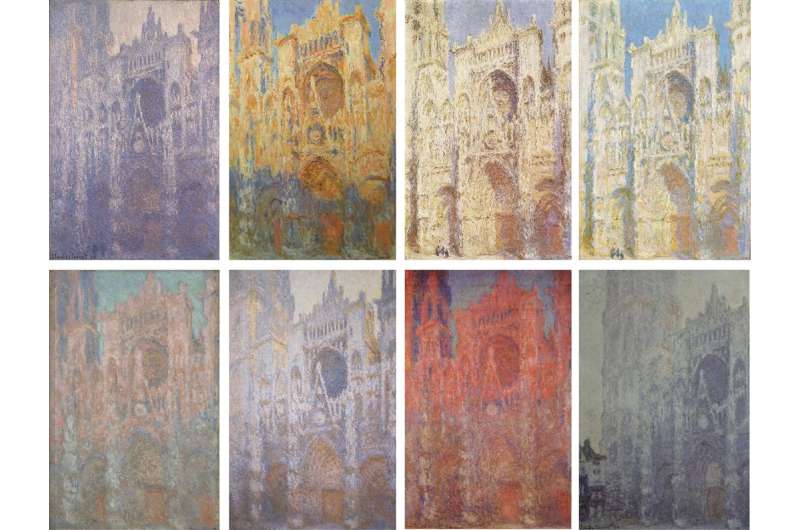This article has been reviewed according to Science X's editorial process and policies. Editors have highlighted the following attributes while ensuring the content's credibility:
fact-checked
peer-reviewed publication
trusted source
proofread
From dawn of time to dusk—our evolutionary ability to perceive time in art

Scientists have shown that people are able to tell apart morning from evening depictions in paintings using simple and subtle color clues in the image.
A study by Newcastle University, UK, and Delft University of Technology, Netherlands, published in the Journal of Vision, has found that people use a combination of color and brightness in a painting to predict the time of day in the image.
For a large range of paintings over three centuries, study participants were able to establish the timing regardless of the exact content or style of painting and this was purely based on the selection of shades used.
Visual perception
In an online behavioral experiment, 51 people rated 104 mostly little-known landscape paintings as depicting either morning, noon, afternoon, evening, or night.
Although the paintings were taken from a range of artists and from across the 17th to 20th century, the time of day ratings people gave them were surprisingly consistent.
In general, paintings with lighter, paler blues and darker yellows were viewed as morning, and those with darker blues and brighter yellows were seen as evening.
Anya Hurlbert, Professor of Visual Neuroscience at Newcastle University, who led the study, said, "Our findings show painters tap into fundamental processes of visual perception that adults possess."
"They appear to be subconsciously understanding how the human brain has learned over evolution to interpret changes in daylight, which adds to our understanding of visual perception."
"This research is one of the first to show that painters deploy simple color and brightness cues to convey something as abstract as time of day."
From nature to art
The color and brightness of natural daylight change regularly over the course of the day and offer subtle color clues that this research showed most people interpreted in the same way.
Experts have shown that daylight is a mixture of direct sunlight and diffuse skylight, meaning the nuances in hue are constrained to follow a curve from blue to orange/yellow.
At dawn, the light changes color rapidly from a dark blue to a brighter yellow or neutral hue; at dusk, it changes in the opposite direction, becoming bluer as it darkens. In the morning and evening, when the sun is close to the horizon, daylight is dimmer than at midday. People were able to pick up on these subtle clues.
Professor Hurlbert said, "The experiment was performed online. A separate experiment in the lab, with a calibrated image display and a smaller number of participants, confirmed the results of the online one."
"Therefore, paintings make a rich source of information for scientists to understand how visual perception works."
More information: Cehao Yu et al, Time-of-day perception in paintings, Journal of Vision (2024). DOI: 10.1167/jov.24.1.1





















